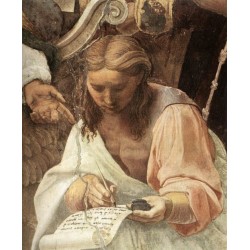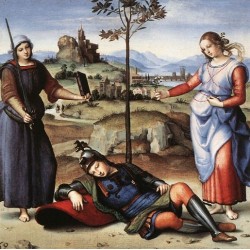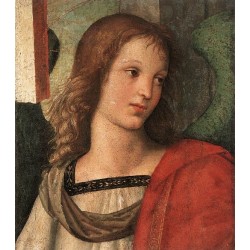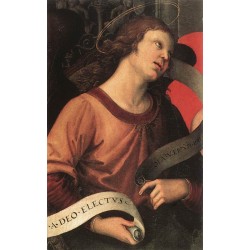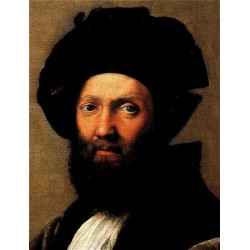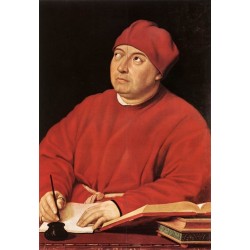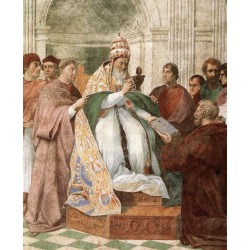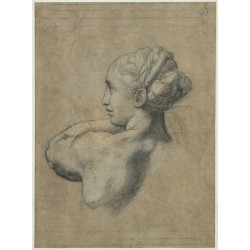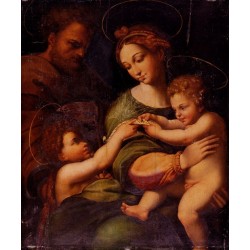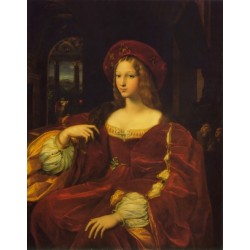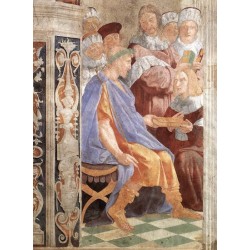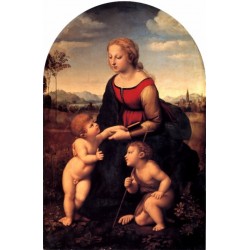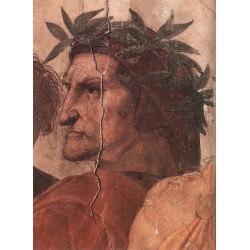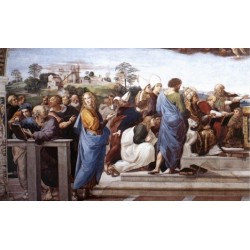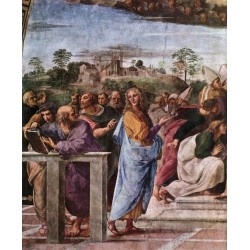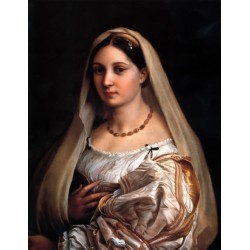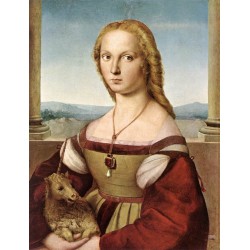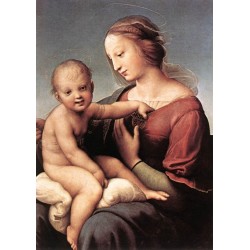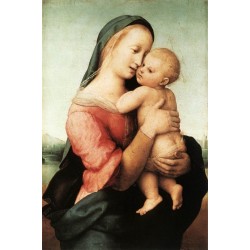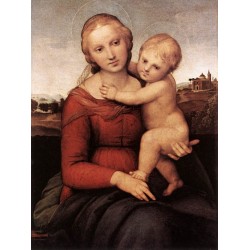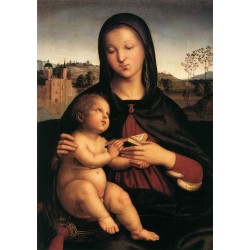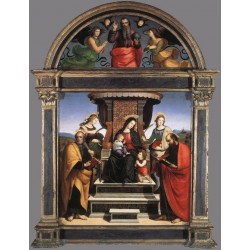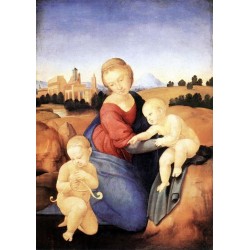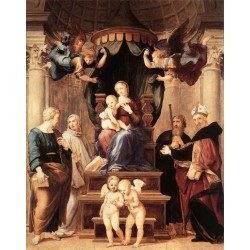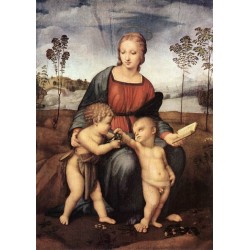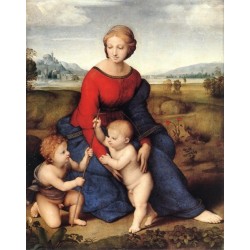Raphael
Raphael Biography
One of the leading figures of Italian High Renaissance arts, Raphael is best familiar for his "Madonnas," as well as the Sistine Madonna, and for his massive figure compositions within the Palace of the Vatican in Rome.
Synopsis
Raphael was born on Apr vi, 1483, in Urbino, Italy. He became Perugino's apprentice in 1504. Living in...
Raphael Biography
One of the leading figures of Italian High Renaissance arts, Raphael is best familiar for his "Madonnas," as well as the Sistine Madonna, and for his massive figure compositions within the Palace of the Vatican in Rome.
Synopsis
Raphael was born on Apr vi, 1483, in Urbino, Italy. He became Perugino's apprentice in 1504. Living in Florence from 1504 to 1507, he began painting a series of "Madonnas." In Rome from 1509 to 1511, he painted the text della Segnatura ("Room of the Signatura") frescoes placed within the Palace of the Vatican. He later painted another fresco cycle for the Vatican, within the text d'Eliodoro ("Room of Heliodorus"). In 1514, Pope Julius II employed Raphael as his chief designer. round the same time, he completed his last add his series of the "Madonnas," associate degree oil painting referred to as the Sistine Madonna. Raphael died in Rome on Apr vi, 1520.
Early Life and training
Italian Renaissance painter and designer Raphael was born old master on Apr vi, 1483, in Urbino, Italy. At the time, Urbino was a cultural center that inspired the humanities. Raphael’s father, Giovanni Santi, was a painter for the Duke of Urbino, Federigo district attorney Montefeltro. Giovanni schooled the young Raphael basic painting techniques and exposed him to the principles of humanistic philosophy at the Duke of Urbino’s court.
In 1494, once Raphael was simply eleven years previous, Giovanni died. Raphael then took over the intimidating task of managing his father’s workshop. His success during this role quickly surpassed his father’s; Raphael was shortly thought of one in every of the best painters in city. As a teen, he was even commissioned to color for the Church of San Nicola within the neighboring city of Castello.
In 1500 a master painter named Pietro Vannunci, otherwise called Perugino, invited Raphael to become his apprentice in Perugia, within the Italian region region of central Italian Republic. In Perugia, Perugino was functioning on frescoes at the Collegio del Cambia. The office lasted four years and provided Raphael with the chance to achieve each information and active expertise. throughout this whole era, Raphael had developed his own distinctive painting vogue, as exhibited within the spiritual works the Mond Crucifixion (circa 1502), The 3 Graces (circa 1503), The Knight’s Dream (1504) and therefore the Oddi screen, wedding of The Virgin, completed in 1504.
Raphael Paintings
In 1504, Raphael left his office with Perugino and enraptured to Florence, wherever he was heavily influenced by the works of the Italian painters Fra Bartolommeo, statue maker old master, sculptor and Masaccio. To Raphael, these innovative artists had achieved a full new level of depth in their composition. By closely learning the main points of their work, Raphael managed to develop a good additional labyrinthine and communicative personal vogue than was evident in his earlier paintings.
From 1504 through 1507, Raphael created a series of "Madonnas," that compute on {leonardo|Leonardo|Leonardo district attorney Vinci|da Vinci|old master|sculptor|sculpturer|carver|statue maker|engineer|applied scientist|technologist|architect|designer} da Vinci's works. Raphael's experimentation with this theme culminated in 1507 along with his painting, La girl jardinière. that very same year, Raphael created his most formidable add Florence, the burial, that was redolent of the ideas that sculptor had recently expressed in his Battle of Cascina.
Raphael enraptured to Rome in 1508 to color within the Vatican "Stanze" ("Room"), below Pope Julius II’s patronage. From 1509 to 1511, Raphael toiled over what was to become one in every of the Italian High Renaissance’s most extremely regarded fresco cycles, those placed within the Vatican's text della Segnatura ("Room of the Signatura"). The text della Segnatura series of frescos embody The Triumph of faith and therefore the faculty of Athens. within the fresco cycle, Raphael expressed the humanistic philosophy that he had learned within the Urbino court as a boy.
In the coming years, Raphael painted a further fresco cycle for the Vatican, placed within the text d'Eliodoro ("Room of Heliodorus"), that includes The Expulsion of Heliodorus, The Miracle of Bolsena, The Repulse of king from Rome and therefore the Liberation of Saint Peter. throughout this same time, the formidable painter created a triple-crown series of "Madonna" paintings in his own art studio. The celebrated Madonna of the Chair and Sistine Madonna were among them.
Architecture
By 1514, Raphael had achieved fame for his work on the Vatican and was able to rent a crew of assistants to assist him end painting frescoes within the text dell’Incendio, liberating him up to specialize in different comes. whereas Raphael continued to simply accept commissions -- as well as portraits of popes Julius II and Catholic Pope -- and his largest painting on canvas, The Transfiguration (commissioned in 1517), he had by now begun to figure on design. when designer Bramante died in 1514, the pope employed Raphael as his chief designer. below this appointment, Raphael created the planning for a chapel in Sant’ Eligio degli Orefici. He additionally designed Rome’s Santa Maria del Popolo Chapel and a neighborhood inside Saint Peter’s new basilica.
Raphael’s study work wasn't restricted to non secular buildings. It additionally extended to coming up with palaces. Raphael’s design honored the classical sensibilities of his forerunner, Bramante, and incorporated his use of decorative details. Such details would come back to outline the style of architecture of the late Renaissance and early Baroque periods.
Death and legacy
On April 6, 1520, Raphael’s thirty seventh birthday, he died suddenly and unexpectedly of mysterious causes in Rome, Italy. He had been functioning on his largest painting on canvas, The Transfiguration (commissioned in 1517), at the time of his death. once his observance mass was control at the Vatican, Raphael's unfinished Transfiguration was placed on his coffin stand. Raphael’s body was inhumed at the Pantheon in Rome, Italy.
Following his death, Raphael's movement toward Mannerism influenced painting designs in Italy’s advancing Baroque amount. Celebrated for the well balanced and harmonious compositions of his "Madonnas," portraits, frescoes and design, Raphael continues to be wide considered the leading inventive figure of Italian High Renaissance arts.



